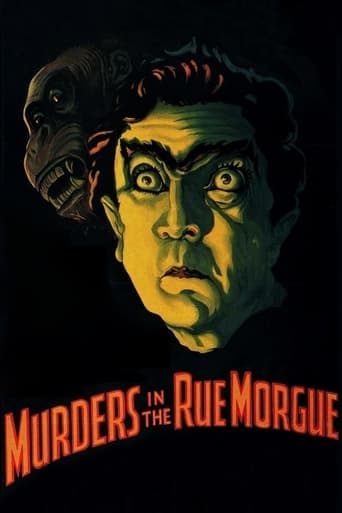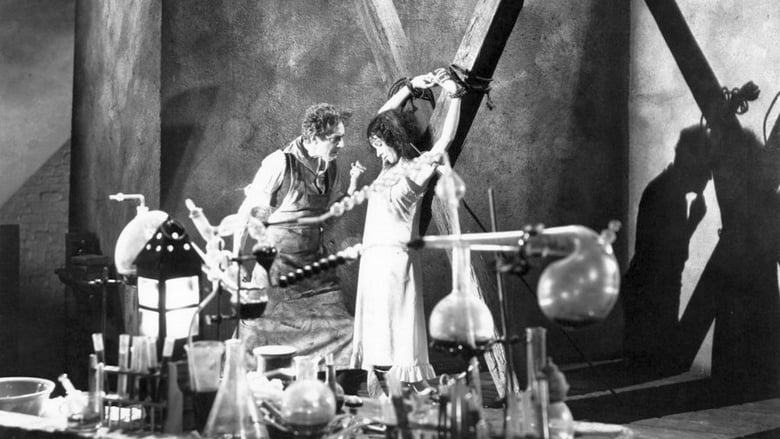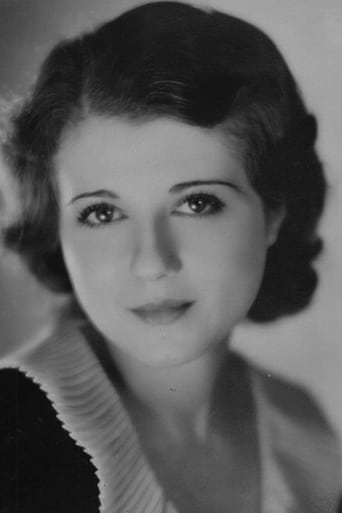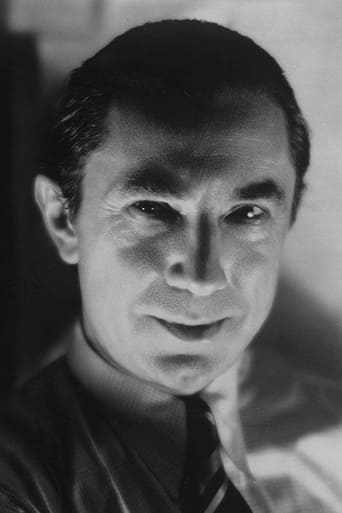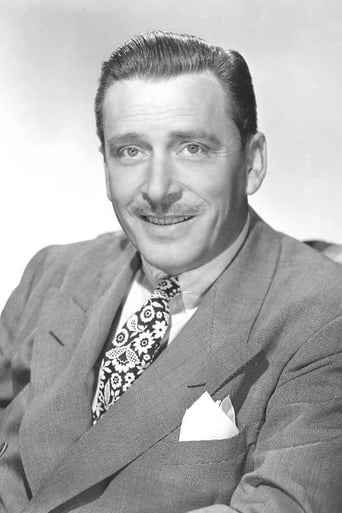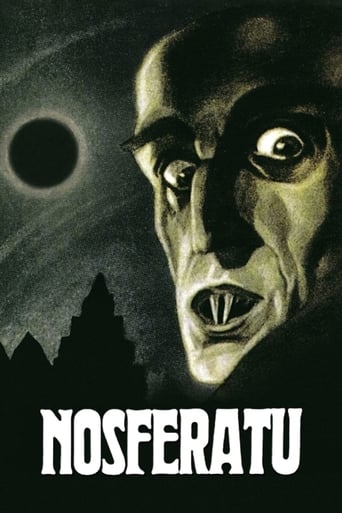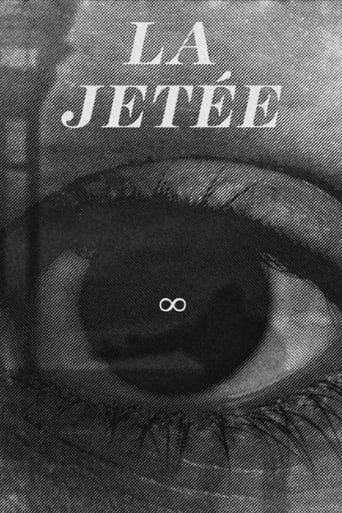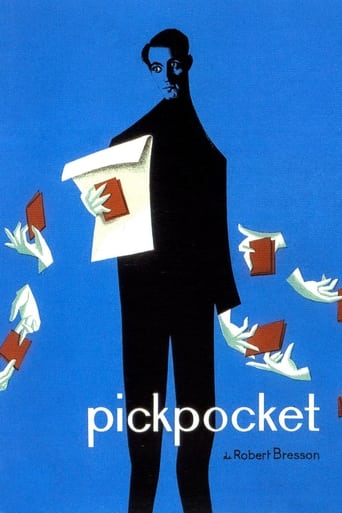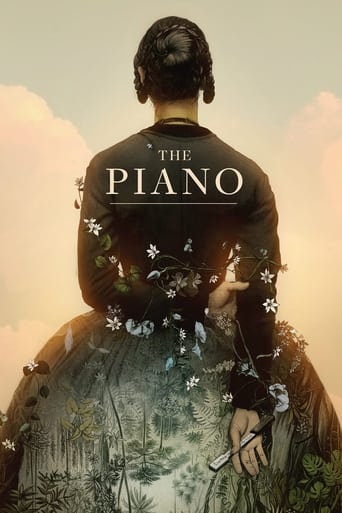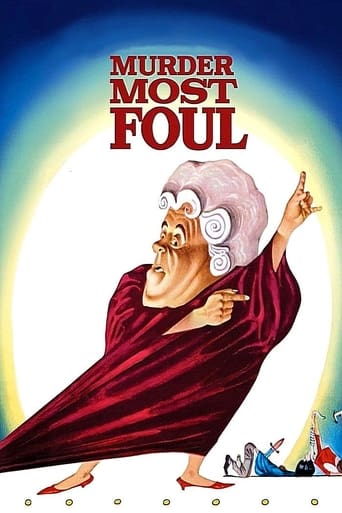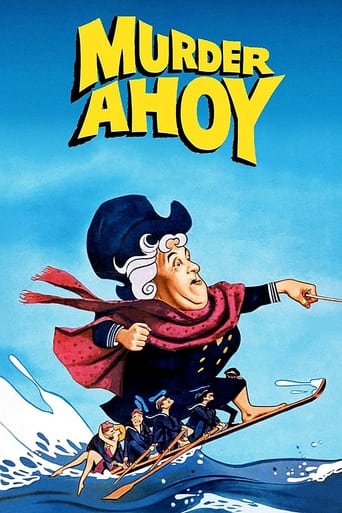Murders in the Rue Morgue (1932)
In 19th Century Paris, a maniac abducts young women and injects them with ape blood in an attempt to prove ape-human kinship but constantly meets failure as the abducted women die.
Watch Trailer
Free Trial Channels
Cast


Similar titles
Reviews
Blending excellent reporting and strong storytelling, this is a disturbing film truly stranger than fiction
One of those movie experiences that is so good it makes you realize you've been grading everything else on a curve.
It is neither dumb nor smart enough to be fun, and spends way too much time with its boring human characters.
Through painfully honest and emotional moments, the movie becomes irresistibly relatable
This movie is tagged with genres horror, crime, mystery and romance. But in none of these aspects it really shines. I think it's a curiosity at best. The only interesting scenes were towards the end when the gorilla abducted the girl and was trying to escape with her over the rooftops. Maybe that scene gave movie makers eventually the idea to make King Kong as it really reminded me a lot of the legendary film ape. Plot and characters are not at all interesting. The character of Dr Mirakle is nice and fitting for Bela Lugosi even though I do prefer him as count Dracula. It's a plot with potential and they try to do make it mysterious even though as viewer we already know from the beginning the intentions of Dr Mirakle. I found it boring and predictable most of the time. There was even a bit of humor in it with the 3 men arguing about the language the suspect spoke which was amusing but served mostly a filler in my opinion. How interesting if Dr Mirakle really succeeded in his experiment, now that would have been interesting!
"Murders in the Rue Morgue" is perhaps the most atmospheric film in the Universal canon, which is really saying something. More then any other, it is deeply influenced by "The Cabinet of Dr. Caligari" and other silent horrors. Paris, as portrayed in this film, is composed of dank homes squeeze into each other, with huge sloping roofs. Triangular buildings stab upwards towards the dreary clouds, dark shapes on the skyline. The entire city is obscured in giant walls of fog. The villain's lair, with its single askew window and slithering staircase is the oddest set in the film. The titular morgue is shown with a huge square at the back, rows of corpses on each side, a sinister black cross hanging overhead. Not to mention the movie's frequent use of shadows. On a purely visual level, "Murders in the Rue Morgue" makes perfect midnight viewing.After Lugosi passed on "Frankenstein," this film was devised as a vehicle for him. It's easy to see why the verbose, speechifying Dr. Mirakle appealed to the actor. Even more sinister then Dracula, Dr. Mirakle is Lugosi at his cruelest, darkest level of villainy. The character is an archetypical mad scientist, obsessed with his bizarre studies, utterly immoral in his scientific pursuits. When the experiments fail, he shouts. He lightly chats with the murderous gorilla and has a dark-faced assistant. A mad evolutionist, Dr. Mirakle injects a prostitute with gorilla's blood, dumping the dead bodies in the river through a trap door. Why the film only implies it, there's definitely a suggestion of bestiality in the doctor's work. Just a few years later, in the post-Production Code era, these topics would undoubtedly be off-limits. Surprisingly, the movie doesn't take any particular stance on evolution. The film's hero, Dupin, is a rational medical student, a believer in crime scene forensics, and intrigued by the mad doctor's theories.Dupin, despite his Kentucky accent, makes for a fairly convincing hero. He has a funny back-and-forth with his roommate, turning down dinner in order to study more. His girlfriend takes up a lot of screen time. Their romance is unremarkable but never annoying. She does work fantastically as a damsel in distress, when being threatened by a glaring Lugosi or kidnapped by the ape. Some of the film's comic relief, such as the no-nonsense morgue attendant, has aged very well while other's aspect, like the xenophobic apartment tenants arguing about their different countries of origin, has aged less well. The movie is incredibly well shot, with a POV shot of a moving swing being my favorite. While the gorilla suit isn't horribly convincing, the film handles it well, only using the suit in long shots and cutting to an actual chimp's face in close-up.At only an hour long, the movie zips by. The chase across the rooftops of Paris makes for a fantastically suspenseful climax. The ape attacks are gruesomely tense, while the scene of Dr. Mirakle abducting the prostitute is still creepy. The simple, compact story makes the inevitable conclusion, the mad scientist's creation rebelling against him, deeply satisfying. "Murders in the Rue Morgue" is a surprisingly grim gem from horror's golden age.
In 1845 Paris, handsome Leon Ames (as Pierre Dupin) and his rotund roommate Bert Roach (as Paul) take their giggly dates to see carnival attraction Bela Lugosi (as "Doctor" Mirakle) and his monstrous ape "Erik". The ape-man walks upright and is called, "The beast with a human soul!" When pretty Sidney Fox (as Camille L'Espanaye) gets close to his cage, "Erik" seems smitten with Mr. Ames' date and grabs her bonnet. Meanwhile, Mr. Lugosi reveals he is mixing the blood of man and ape to show evolution. We also see Lugosi save streetwalker and future "What's My Line?" panelist Arlene Francis; then, he gives her the needle...Naturally, Lugosi sets his sights on Ms. Fox, and then Ames must try to save her...This is a ridiculous story, and not true to the Edgar Allan Poe original; but, it is interesting and stylish. The common assertion that our simian cousins are "evolving" is still being repeated - usually by those sarcastically seeking to disprove evolution. This is incorrect, of course. Today's apes and humans are not evolving into each other; they merely have a common ancestral tract, which has been shown in ways one could relate to Lugosi's examination of blood in this film. Lugosi's lurid and torturous patient preparation of Ms. Francis and the expressionist sequences photographed by Karl Freund are highlights.******* Murders in the Rue Morgue (2/21/32) Robert Florey ~ Bela Lugosi, Leon Ames, Sidney Fox, Bert Roach
Murders in the Rue Morgue is a lesser known title featuring Lugosi when comparing it to his venerable portrayal of Count Dracula or even Murder Legendre in 1932's White Zombie – perhaps his role as a gypsy, albeit a small one, in The Wolf Man is more recognizable. As classic as some of these characters were, it was that mysterious Count from Transylvania that forever cemented his name in the horror hall of fame. Murders in the Rue Morgue is based on an Edgar Allen Poe short story. It recalls the tale of a time in the mid-1800's where a man by the name of Dr. Mirakle captures young women and injects them with the blood of an ape in order to create a mate alongside his pet sideshow, Erik. A young girl, L'Espanaye, is targeted by Mirakle while her fiancée Pierre Dupin pieces together a trail of bodies as a result of a sinister plot.One might scoff at the idea that a talented eye for cinematography existed in the early days of the movie business with such a limited palette but if you've taken the time to study each scene in classic titles like Das Cabinet des Dr. Caligari from 1920 or even 1922's Nosferatu (a precursor to Dracula), both exhibit a fantastic glimpse of film noir. Karl Freund, a well-known and respected cinematographer, made excellent use out of this method after studying film in Berlin in the early 1900's – Freund can be credited with various artistic endeavors in the industry, most notably his work on Dracula and of course, Murders in the Rue Morgue. Freund's perfected his craft as a result of the German Expressionist movement that occurred after World War I, with the use of serious black and white tones that set the stage for a range of emotions; Murders in the Rue Morgue looks gorgeous because of this tremendous feature.Lugosi, supported by a small cast of characters, help shape Murders in the Rue Morgue but doesn't make a lasting impression. Dr. Mirakle was Lugosi's first role after Dracula and already we witness various similarities between the two characters. It is enjoyable to view him as a more conniving individual with an untamed mane of hair in this feature as opposed to the clean cut and evil appearance he portrayed as a vampire. This film's run-time is about an hour long but the pace drags on much too slowly for my liking – I have not gotten around to reading Poe's short story that the film was based on but I'm sure they cut corners which is understandable, but I believe that certain characters deserved to be fleshed out more and certain elements of the plot explored more in depth. Like most films of this era, the ending happens so suddenly without the usual build-up that you'd expect from modern movies. Without an intriguing plot and an award-winning performance by anyone involved, this just adds to the bland after-taste I received when Murders in the Rue Morgue reached its conclusion. I can't stress enough how wonderful the quality of film is, so it makes it difficult to score this film lowly.There are audiences that exist today that simply can't grasp the importance or don't share the same appreciation for the great horror classics as fans of the genre do but even if you don't know Bela Lugosi's name or his life story, mostly anyone will agree that he's at the top. It's both sad and unfortunate that due to typecasting, coupled with a drug addiction to opiates, Lugosi's career in Hollywood was relegated to B-grade features as Universal Studios changed management in the late 30's. More importantly, however, was that his thick Hungarian accent disabled him from playing diverse roles, essentially categorizing him as a "horror guy" with parts that closely resembled one another. A depiction of his life can be seen in Tim Burton's 1994 film Ed Wood, a comedic yet informative look of Lugosi's life beyond the cape.Bela Lugosi died in 1956 of a heart attack at the age of 73. Reportedly, several other icons in the business were at his funeral, particularly Boris Karloff (despite popular belief the two men were not rivals), Peter Lorre, and Vincent Price. In Vincent Price's autobiography, he claims that while looking at the casket, Lorre commented to him, "Should we drive a stake through his heart, just in case?"

